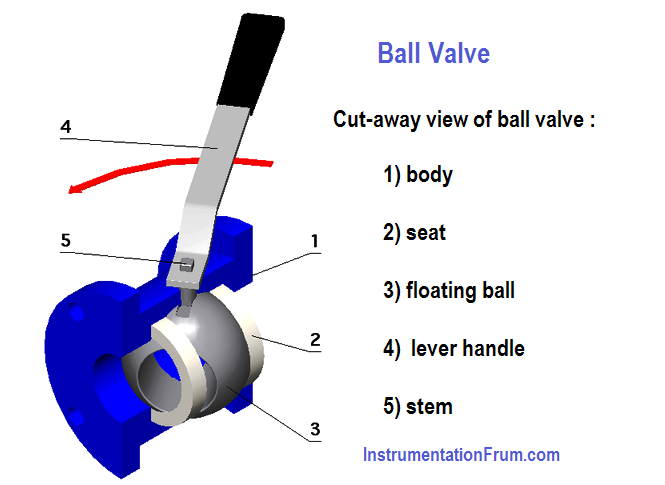Ball valves, as the name implies, are stop valves that use a ball to stop or start the flow of fluid. The ball performs the same function as the disk in the globe valve.
When the valve handle is operated to open the valve, the ball rotates to a point where the hole through the ball is in line with the valve body inlet and outlet.
When the valve is shut, which requires only a 90 degree rotation of the handwheel for most valves, the ball is rotated so the hole is perpendicular to the flow openings of the valve body, and flow is stopped.
1 Like
These are valves that make use of a ball to navigate the movement of substances from one seating surface to another. The function of the ball is similar to a track ball found in old computer mice.
However, the ball in the valve consists of a port, which changes alignment in response to the position of the valve. For instance, when the ball valve is set to open, the port changes the direction according to the flow of the substance. When the valve is closed, however, the port adopts a perpendicular direction and acts as a seal to block the flow of substances.
Ball valves vary in the degree to which the port can change directions. In most cases, the ball valve will adopt a 90 degree rotation. However, in other cases, a 360 degree rotation is more beneficial.
1 Like
What is a ball valve?
A ball valve is described as a mechanical device that directs, guides and modulates the flow of various types of liquids by way of an opening of a ball which has an opening in the middle. The opening is referred to as the port. By turning the handle on the ball valve, this manually opens/closes the port which controls the pressure from the flow of the liquid. Durability and “perfect” shutdown/shutoff are what makes the ball valve advantageous over other type of valves.

Valves are found in our everyday living and may go unnoticed. For example, there are plumbing valves which are at our sinks in our spigots. There are valves inside our washing machines, dishwashers, gas fireplaces, outside water spigots, refrigerators and more. Various types of industries utilize valves for their productions. Such industries include electronics, power, automotive, printing, plastics, textiles, metal, medical, chemical and food, to name a few. The industries that utilize ball valves typically have a need for supporting high pressure and temps exceeding 480 degrees. Ball valves are simplistic to operate and repairs are made easily without being removed from their pipeline.
Being made of steel, brass, iron, bronze or PVC, ball valves can range in sizes from .2 to 11.81 inches. More complex control systems using valves that need to regulate flow through a pipe will need an actuator. The actuator controls the valve pneumatically or is motor-operated and keeps it positioned appropriately so that the flow of the liquid is precise to the changing pressures and flow levels.
The basic types of ball valves include Full Port , Reduced Port , V-port , Multi-port , Standard Port and Cavity Filler ball valve . There are 3-way and 4-way ball valves. Depending on the application would determine the type of ball valve being used. The specifications to be considered for determining the appropriate ball valve would be the temperatures and pressure, number of ports, valve size, type of body material, end connectors and configurations.
Source - valtorc
1 Like
